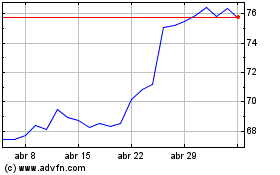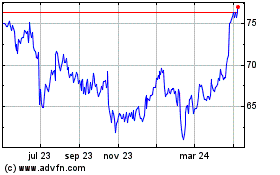FORM 6-K
SECURITIES
AND EXCHANGE COMMISSION
Washington,
D.C. 20549
Report
of Foreign Issuer
Pursuant
to Rule 13a-16 or 15d-16 of
the
Securities Exchange Act of 1934
For the
month of July 2024
Commission
File Number: 001-11960
AstraZeneca PLC
1
Francis Crick Avenue
Cambridge
Biomedical Campus
Cambridge
CB2 0AA
United
Kingdom
Indicate
by check mark whether the registrant files or will file annual
reports under cover of Form 20-F or Form 40-F.
Form
20-F X Form 40-F __
Indicate
by check mark if the registrant is submitting the Form 6-K in paper
as permitted by Regulation S-T Rule 101(b)(1):
Indicate
by check mark if the registrant is submitting the Form 6-K in paper
as permitted by Regulation S-T Rule 101(b)(7): ______
Indicate
by check mark whether the registrant by furnishing the information
contained in this Form is also thereby furnishing the information
to the Commission pursuant to Rule 12g3-2(b) under the Securities
Exchange Act of 1934.
Yes __
No X
If
“Yes” is marked, indicate below the file number
assigned to the Registrant in connection with Rule 12g3-2(b):
82-_____________
AstraZeneca PLC
INDEX
TO EXHIBITS
1.
Calquence fixed-duration combo improved 1L CLL PFS
29 July
2024
Fixed-duration Calquence plus venetoclax,
with or without obinutuzumab, significantly improved
progression-free survival in 1st-line chronic lymphocytic leukaemia
in AMPLIFY Phase III trial
Favourable trend in overall survival was also observed
Positive
high-level results from an interim analysis of the AMPLIFY Phase
III trial showed a fixed duration of
AstraZeneca's Calquence (acalabrutinib)
in combination with venetoclax, with or without obinutuzumab,
demonstrated a statistically significant and clinically meaningful
improvement in progression-free survival (PFS) compared to
standard-of-care chemoimmunotherapy in previously untreated adult
patients with chronic lymphocytic leukaemia (CLL).
For the
secondary endpoint of overall survival (OS), a trend was observed
in favour of Calquence in combination with
venetoclax, with or without obinutuzumab, versus standard-of-care
chemoimmunotherapy. The OS data were not mature at the time of this
analysis and the trial will continue to assess OS as a key
secondary endpoint.
CLL is
caused by the abnormal production of white blood cells and is the
most prevalent type of leukaemia in adults worldwide, with numbers
anticipated to grow.1-3 In the
first-line setting, approximately 40,000 patients are treated with
the current standard of care.4 Although CLL is
considered an incurable cancer, patients often live with the
disease for many years, and may remain on continuous
treatment.5
Jennifer
R. Brown, MD, PhD, Director of the CLL Center of the Division of
Hematologic Malignancies, Dana-Farber Cancer Institute, and the
Worthington and Margaret Collette Professor of Medicine at Harvard
Medical School, and principal investigator of the trial, said: "The
AMPLIFY results demonstrate the potential of acalabrutinib and
venetoclax with or without obinutuzumab to be effective
and well-tolerated fixed-duration treatment options for
patients with chronic lymphocytic leukaemia. This is an important
advance in this setting as fixed-duration regimens allow those
living with this chronic disease to take breaks from their
treatment, thereby decreasing the possibility of long-term adverse
events and drug resistance and improving quality of
life."
Susan
Galbraith, Executive Vice President, Oncology R&D, AstraZeneca,
said: "The progression-free survival and overall survival results
from the AMPLIFY Phase III trial demonstrate the potential of
including a BTK inhibitor in a fixed-duration regimen and reinforce
our leadership in advancing science for patients with chronic
lymphocytic leukaemia. If approved, Calquence would become the only
second-generation BTK inhibitor available as both a
treat-to-progression and fixed-duration treatment, providing more
options for patients and their healthcare providers."
The
safety and tolerability were consistent with the known safety
profile of each medicine. No new safety signals were identified,
with low rates of cardiac toxicity observed.
The
data will be presented at a forthcoming medical meeting and shared
with global regulatory authorities.
Notes
CLL
In CLL,
there is an accumulation of abnormal lymphocytes within the bone
marrow and in blood and lymph nodes.1 Although some
people with CLL may not experience any symptoms at diagnosis,
others may experience symptoms, such as weakness, fatigue, weight
loss, chills, fever, night sweats, swollen lymph nodes and
abdominal pain.6 As the number
of abnormal cells increases, there is less room within the marrow
for the production of normal white blood cells, red blood cells and
platelets. This could result in anaemia, infection and
bleeding.1 B-cell receptor
signalling through BTK is one of the essential survival pathways
for CLL.
AMPLIFY
AMPLIFY
is a randomised, global, multi-centre, open-label Phase III trial
evaluating the efficacy and safety of Calquence in combination with
venetoclax with and without obinutuzumab compared to investigator's
choice of chemoimmunotherapy in adult patients with previously
untreated CLL without del(17p) or TP53 mutation.7 Patients were
randomised 1:1:1 to receive either Calquence in combination with
venetoclax, Calquence in combination with
venetoclax plus obinutuzumab for a fixed duration or
standard-of-care chemoimmunotherapy.7
The
primary endpoint is PFS in the Calquence and venetoclax arm as
assessed by an Independent Review Committee (IRC) and PFS in this
arm assessed by investigators (INV) is a key secondary endpoint.
IRC and INV assessed PFS in the Calquence, venetoclax and
obinutuzumab arm as a key secondary endpoint. Other key secondary
endpoints include OS, event-free survival, overall response rate,
duration of response and time to next treatment.7 The trial
includes 27 countries across North and South America, Europe, Asia
and Oceania.7
The
AMPLIFY trial enrolled patients from 2019 to 2021, continuing
through the COVID-19 pandemic.7 Patients with
blood cancer remain at a disproportionately high risk of severe
outcomes from COVID-19, including hospitalisation and death
compared to the general population.8
Calquence
Calquence (acalabrutinib) is a second-generation,
selective inhibitor of Bruton's tyrosine kinase
(BTK). Calquence binds covalently to BTK,
thereby inhibiting its activity.9 In B-cells, BTK
signalling results in activation of pathways necessary for B-cell
proliferation, trafficking, chemotaxis and adhesion.
Calquence has been used to treat more than 80,000
patients worldwide10 and is
approved for the treatment of CLL and small lymphocytic lymphoma
(SLL) in the US and Japan, approved for CLL in the EU and many
other countries worldwide and approved in China for relapsed or
refractory CLL and SLL. Calquence is also approved in the
US, China and several other countries for the treatment of adult
patients with mantle cell lymphoma (MCL) who have received at least
one prior therapy. Calquence is not currently
approved for the treatment of MCL in Japan or the EU.
As part
of an extensive clinical development programme, Calquence is currently being
evaluated as a single treatment and in combination with
standard-of-care chemoimmunotherapy for patients with multiple
B-cell blood cancers, including CLL, MCL and diffuse large B-cell
lymphoma.
AstraZeneca in haematology
AstraZeneca
is pushing the boundaries of science to redefine care in
haematology. Our goal is to help transform the lives of patients
living with malignant, rare and other related haematologic diseases
through innovative medicines and approaches that are shaped by
insights from patients, caregivers and physicians.
In
addition to our marketed products, we are spearheading the
development of novel therapies designed to target underlying
drivers of disease across six scientific platforms. Our recent
acquisitions of Alexion, with expertise in rare, non-malignant
blood disorders, and Gracell Biotechnologies Inc., focused on cell
therapies for haematologic malignancies, expand our haematology
pipeline and enable us to reach more patients with high unmet needs
through the end-to-end development and delivery of novel
therapies.
AstraZeneca in oncology
AstraZeneca
is leading a revolution in oncology with the ambition to provide
cures for cancer in every form, following the science to understand
cancer and all its complexities to discover, develop and deliver
life-changing medicines to patients.
The
Company's focus is on some of the most challenging cancers. It is
through persistent innovation that AstraZeneca has built one of the
most diverse portfolios and pipelines in the industry, with the
potential to catalyse changes in the practice of medicine and
transform the patient experience.
AstraZeneca
has the vision to redefine cancer care and, one day, eliminate
cancer as a cause of death.
AstraZeneca
AstraZeneca
(LSE/STO/Nasdaq: AZN) is a global, science-led biopharmaceutical
company that focuses on the discovery, development, and
commercialisation of prescription medicines in Oncology, Rare
Diseases, and BioPharmaceuticals, including Cardiovascular, Renal
& Metabolism, and Respiratory & Immunology. Based in
Cambridge, UK, AstraZeneca's innovative medicines are sold in more
than 125 countries and used by millions of patients worldwide.
Please visit astrazeneca.com and
follow the Company on Social Media @AstraZeneca.
Contacts
For
details on how to contact the Investor Relations Team, please
click here. For Media
contacts, click here.
References
1.
National Cancer Institute. Chronic Lymphocytic Leukemia Treatment
(PDQ®)-Patient Version: General Information About Chronic
Lymphocytic Leukemia. Available online. Accessed July
2024.
2.
American Cancer Society. What is Chronic Lymphocytic Leukemia?
Available online. Accessed July 2024.
3.
Jain N, et al. Prevalence and Economic Burden of Chronic
Lymphocytic Leukemia (CLL) in the Era of Oral Targeted
Therapies. Blood. 2015;126(23):871.
4.
Cerner CancerMPact and DRG databases. Reflects epidemiology
estimates across G8 countries (Cerner CancerMPact for G7: US, EU,
Japan; DRG database for China). Accessed July 2024.
5.
American Cancer Society. After Chronic Lymphocytic Leukemia
Treatment. Available at:
https://www.cancer.org/cancer/types/chronic-lymphocytic-leukemia/after-treatment/follow-up.
Accessed July 2024.
6.
American Cancer Society. Signs and Symptoms of Chronic Lymphocytic
Leukemia. Available online. Accessed July 2024.
7.
ClinicalTrials.gov. Study of Acalabrutinib (ACP-196) in Combination
With Venetoclax (ABT-199), With and Without Obinutuzumab (GA101)
Versus Chemoimmunotherapy for Previously Untreated CLL (AMPLIFY).
Available at: https://clinicaltrials.gov/study/NCT03836261.
Accessed July 2024.
8.
Dube S, et al. Continued Increased Risk of COVID-19 Hospitalisation
and Death in Immunocompromised Individuals Despite Receipt of
≥4 Vaccine Doses: Updated 2023 Results from INFORM, a
Retrospective Health Database Study in England. Poster P0409 at
ECCMID 2024.
9.
Wu J, Zhang M, Liu D. Acalabrutinib (ACP-196): a selective
second-generation BTK inhibitor. J Hematol Oncol.
2016;9(21).
10.
Data on File, REF-236261. AstraZeneca Pharmaceuticals
LP.
Adrian Kemp
Company Secretary
AstraZeneca PLC
SIGNATURES
Pursuant
to the requirements of the Securities Exchange Act of 1934, the
Registrant has duly caused this report to be signed on its behalf
by the undersigned, thereunto duly authorized.
Date:
29 July 2024
|
|
By: /s/
Adrian Kemp
|
|
|
Name:
Adrian Kemp
|
|
|
Title:
Company Secretary
|
AstraZeneca (NASDAQ:AZN)
Gráfica de Acción Histórica
De Jun 2024 a Jul 2024

AstraZeneca (NASDAQ:AZN)
Gráfica de Acción Histórica
De Jul 2023 a Jul 2024
